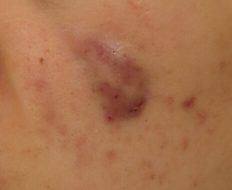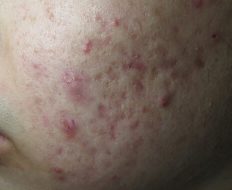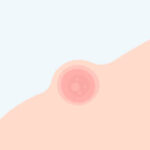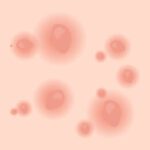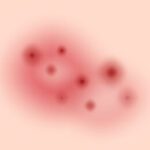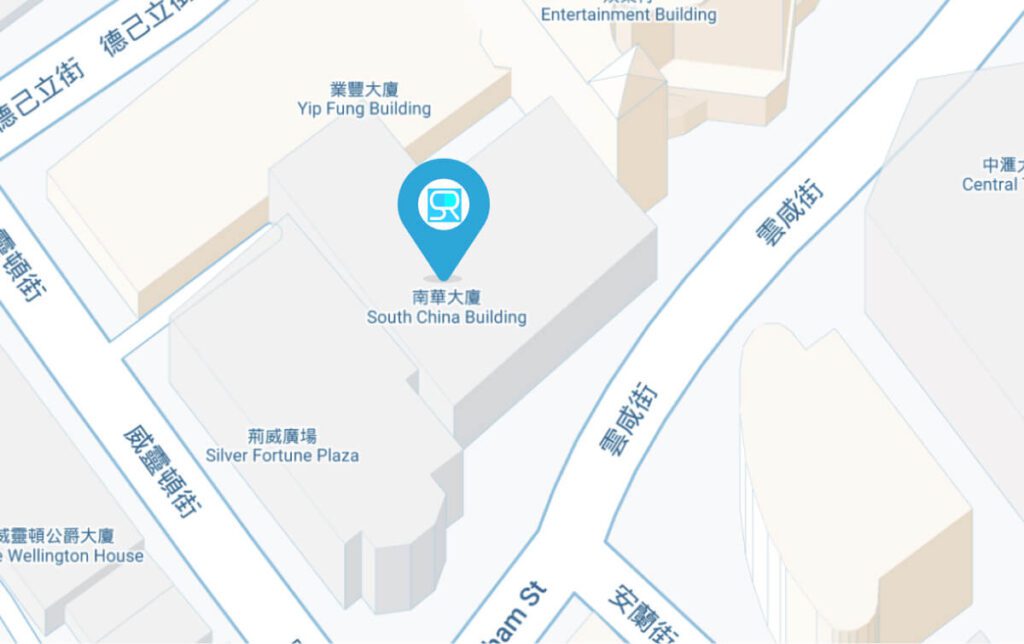SKIN PROBLEMS/
Acne
Understanding Acne: Causes, Treatments, and Solutions with Isotretinoin, Scar Improvement, and Microneedling RF
Almost all people have had acne once in a while. Acne although more common in teenagers can happen in people of any age. Some people can begin to get acne in adulthood.
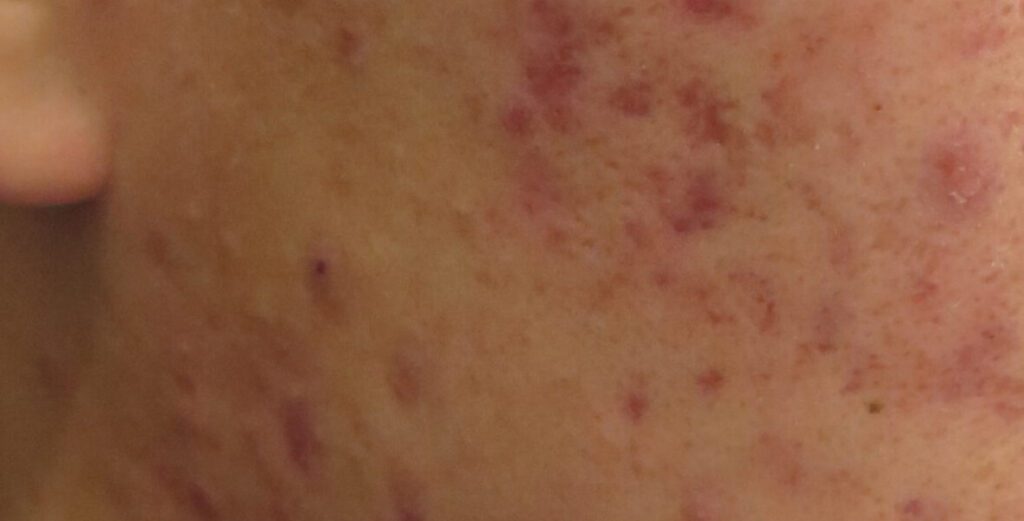
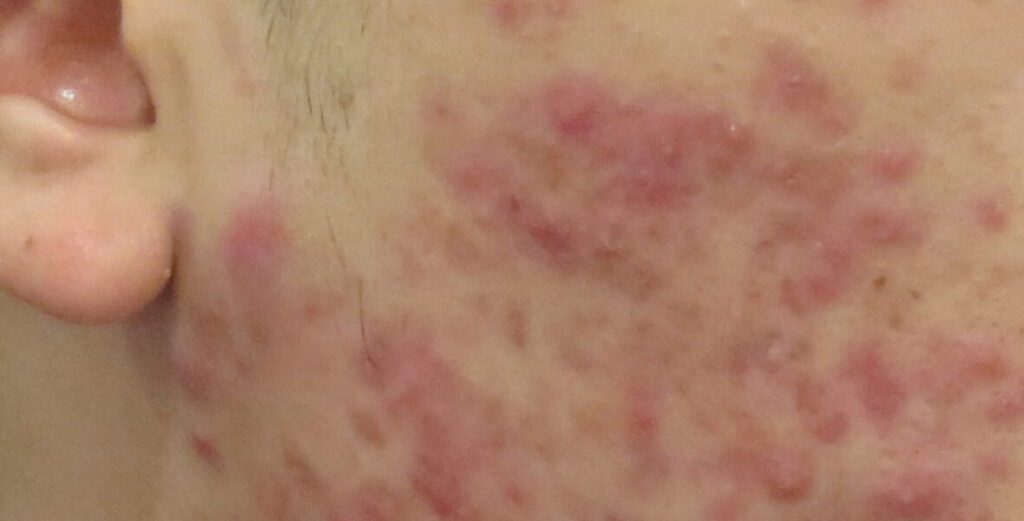
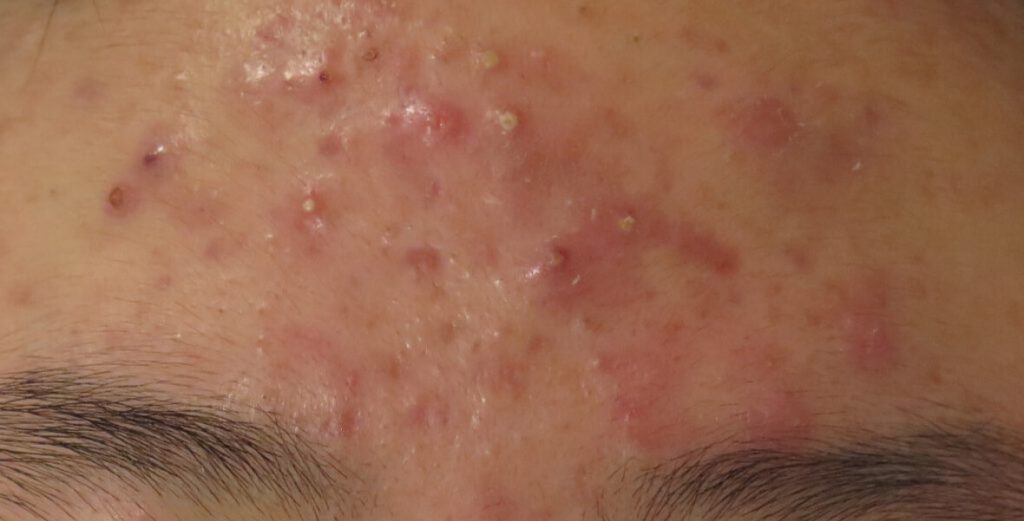
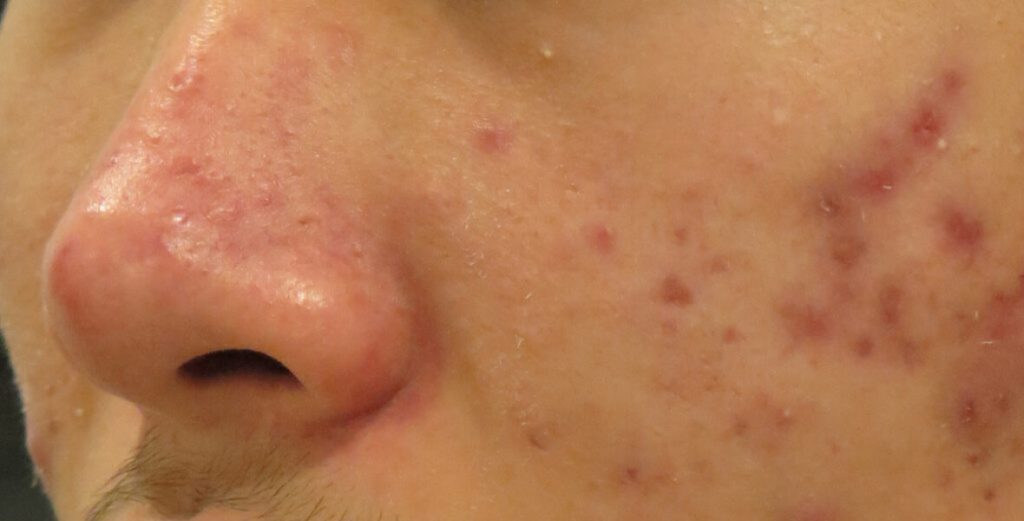
Causes of Acne:A Deep Dive into the Main Factors
Acne is a prevalent skin condition with a wide range of causes. Understanding these factors can help us better prevent and manage acne. Here are the main contributors to acne development:
- Hormonal Changes
- Puberty: During puberty, levels of androgens increase, stimulating the sebaceous glands to produce more oil. This excess oil can clog pores, making it one of the primary causes of acne.
- Menstrual Cycle: For women, hormonal fluctuations before and during menstruation can lead to increased oil production, which may also result in the development of acne.
- Lifestyle Factors
- Diets: Diets high in sugar and fat may contribute to the formation of acne. Specifically, excessive consumption of dairy products and carbohydrates can affect blood sugar levels, which in turn impacts skin health.
- Stress: Stress triggers the release of cortisol, a hormone associated with increased oil production. This can make the skin more prone to acne. Therefore, managing stress is crucial for maintaining healthy skin.
- Other Factors
- Medications: Certain medications, such as corticosteroids, can trigger acne outbreaks because they affect hormonal balance or oil production.
- skincare Products: Using unsuitable skincare products, particularly those that are oily or comedogenic, can worsen acne. Choosing products labeled as “non-comedogenic” can help reduce this risk.
The causes of acne involve various factors, including hormonal changes, lifestyle choices, and other external influences. Understanding these causes can help us develop more effective prevention and treatment strategies. By adjusting our diet, managing stress, and selecting appropriate skincare products, we can better maintain skin health and reduce the occurrence of acne.
Related Video
Diet and Acne: Understanding How Nutrition Affects Skin Health
Acne is a common skin issue, and many people may not realize that diet plays a significant role in its occurrence. Research shows that the consumption of certain foods can significantly impact the onset and severity of acne. Here are some key findings to help you understand how diet affects skin health
- High Glycemic Index Foods
- High glycemic index foods, such as white bread, candies, and sugary beverages, can rapidly raise blood sugar levels. This quick spike may lead to increased insulin levels, which can affect skin health. Research has found that elevated insulin can stimulate the release of androgens, hormones that promote oil production, further exacerbating the development of acne. Therefore, limiting the intake of high glycemic index foods may help reduce the risk of acne.
- Benefits of Omega-3 Fatty Acids
- Foods rich in omega-3 fatty acids (such as fish and flaxseeds) are recognized for their excellent anti-inflammatory properties. These foods can help reduce the body’s inflammatory response, potentially alleviating acne-related inflammation. Preliminary studies indicate that increasing omega-3 fatty acid intake may positively impact skin health.
By choosing low glycemic index foods and increasing your intake of omega-3 fatty acids, you can improve skin health to some extent and reduce the occurrence of acne. Paying attention to your diet not only enhances overall health but can also contribute to clearer skin.
Acne Symptoms and Affected Areas: A Comprehensive Overview
Acne is a prevalent skin condition that impacts countless individuals. Understanding the symptoms of acne and the areas where it typically appears is a crucial step towards improving skin health.
- Common Acne Symptoms
- Comedones
- Comedones are the earliest stage of acne and are classified into open and closed types. Open comedones (blackheads) occur when pores are clogged with sebum and dead skin cells, leading to small black dots due to oxidation. Closed comedones (whiteheads) are clogged pores that are not exposed to air, resulting in small white bumps.
- Papules
- Papules are small, red, raised bumps that are usually inflamed hair follicles. They feel firm to the touch and may be accompanied by pain. This symptom typically indicates that the skin is experiencing an inflammatory response.
- Pustules
- Pustules are small, pus-filled bumps that appear red with a white or yellow center, indicating inflammation and infection. This condition suggests that acne has progressed further.
- Cysts
- Cysts are large, deep inflammatory lumps that are usually painful and filled with pus. They can cause redness and swelling of the skin. The presence of cysts often requires professional medical intervention.
- Comedones
- The distribution area of acne
Acne usually appear in areas such as the cheeks, forehead, nose and chin (the T-zone). These areas secrete more oil, so acne is more likely to form. Especially on the cheeks, papules, pustules, and cysts are more common.
Understanding the symptoms of acne and its common areas of growth is crucial for early detection and treatment. Taking appropriate care for these symptoms can not only improve your skin condition, but also improve your self-confidence. If your acne problem persists, it is recommended to seek evaluation and treatment from a professional dermatologist.
Effective Acne Treatment Methods: A Comprehensive Guide
When dealing with acne, many people seek effective treatment solutions to improve their skin condition. Here are some proven acne treatment methods to help you choose the most suitable option for your needs.
- Topical Treatments (Ointments)
- Topical antibiotic ointments can help reduce bacteria on the skin and effectively alleviate inflammation. These medications are often the first choice for treating mild to moderate acne.
- Topical retinoids promote skin cell turnover, preventing clogged pores and reducing the formation of acne. These products are suitable for long-term use to improve skin texture and appearance.
- Oral Treatments
Oral vitamin A derivatives (such as isotretinoin) are designed for treating severe acne and can significantly reduce sebum production, improving skin condition.
- Injection Treatments
Corticosteroid injections target large acne nodules and cysts, rapidly reducing swelling and pain, providing immediate relief. This treatment is typically administered under the supervision of a dermatologist, suitable for situations requiring quick improvement.
- Laser Treatments
Laser therapy can be used to treat inflamed acne, effectively reducing sebum production and improving skin appearance. This technique is usually performed by qualified dermatologists.
These acne treatment methods should be chosen according to individual needs and medical recommendations for optimal effectiveness. Whether it involves topical drugs, oral treatments, injections, or laser therapy, seeking professional medical advice is crucial. With a professional treatment plan, you can significantly enhance your skin condition and regain your confidence.
Guide to the Use and Effectiveness of Isotretinoin for Acne Treatment
Isotretinoin is a potent medication specifically used to treat severe acne.
- Mechanism of Action of Isotretinoin
Isotretinoin, as a derivative of vitamin A, has several key mechanisms in the treatment of acne:
- Reduction of Sebum Production: Isotretinoin significantly decreases the production of oil from the sebaceous glands, which is crucial for preventing the formation of acne.
Prevention of Clogged Pores: Isotretinoin helps lower the risk of clogged pores, thereby minimizing the growth of bacteria that can lead to inflammation.
Most patients notice significant improvement in their acne after using isotretinoin. Clinical studies have shown that this medication is highly effective for treating severe acne, with many patients experiencing lasting improvement after completing their treatment course.
- Potential Side Effects of Isotretinoin
While isotretinoin is highly effective, it does come with some potential side effects:
- Common side Effects:These include dry skin, chapped lips, and increased sensitivity to sunlight. These issues can often be alleviated with moisturizers and eye drops.
- Serious Side Effects: Although less common, some patients may experience mood changes, headaches, or gastrointestinal discomfort. If any of these problems occur, it is important to notify a doctor immediately.
- Pregnancy Risks: The use of isotretinoin during pregnancy poses a very high risk, potentially leading to birth defects. Therefore, women taking isotretinoin must adhere to a strict pregnancy prevention program and use effective contraception.
Importance of Regular Medical Monitoring and regular medical check-ups are crucial during isotretinoin treatment
Blood tests are required throughout the treatment to monitor liver function and lipid levels, ensuring the safety of the medication.
Despite the potential side effects of isotretinoin, many individuals find that the long-term benefits for their skin outweigh the short-term discomfort. For those facing persistent severe acne, isotretinoin is a viable and effective treatment option. Before starting treatment, patients should discuss the potential risks and expected outcomes in detail with their healthcare provider to ensure a safe and effective treatment plan.
Related Video
Acne Care Tips: Secrets to Keeping Skin Clean and Healthy
Acne is a skin issue that many people face, and proper care can significantly reduce breakouts and improve skin health. Here are some simple yet effective care tips to help you achieve clearer skin
- Cleansing
Cleansing is the first step in skincare. Use a gentle cleanser daily to wash your skin. Choose oil-free cleansing products to effectively remove excess oil and dirt, keeping your skin fresh. Avoid strong cleansers that may irritate the skin.
- Avoid Oily Products
When selecting cosmetics, avoid oily foundations and thick sunscreens. These products can clog pores and worsen acne. Opt for products labeled as “non-comedogenic,” which can help reduce the formation of acne.
- Avoid Harsh Cleansers
While strong exfoliating cleansers may provide a temporary feeling of freshness, they can actually worsen acne. It is recommended to use a mild cleanser and avoid over-exfoliating to protect the skin’s natural barrier.
- Do not squeeze or pick at Acne
Squeezing acne can increase inflammation and the risk of scarring. Instead, allow acne to heal naturally to prevent further skin damage.
Helpful Tip:
- Regularly change bedding and towels
- Reduces bacterial growth
- Lowers likelihood of acne
- Keep skin hydrated
- Choose oil-free moisturizers
- Maintains skin hydration without increasing oiliness
These care methods not only help reduce acne occurrences but also improve overall skin health. By adopting proper skincare habits, you can achieve clearer and healthier skin.
The Process and Types of Acne Scar Formation: Understanding the Secrets of Skin Healing
Acne scars are the result of the skin’s natural healing response, primarily caused by inflammation resulting from acne lesions. Understanding the process of scar formation and the various types can help us better prevent and treat this issue. Here is an overview of the main processes involved in acne scar formation and the different types of scars.
- Inflammatory Response
When acne becomes inflamed and penetrates deeper into the skin, it can damage the underlying tissues. The body’s response to this damage is inflammation, a protective mechanism aimed at clearing infections and promoting healing. However, this process can also lead to scar formation. - Collagen Production
During the healing process of acne, the body attempts to repair the damage by producing collagen. Collagen is a key protein that provides structure to the skin and is essential for maintaining its elasticity and integrity. - Types of Scars
The formation of scars depends on the level of collagen production and can be classified into two main types:- Atrophic Scars: When collagen production is insufficient, it can lead to the formation of ice pick scars, boxcar scars, and rolling scars, which typically create depressions on the skin’s surface.
- Hypertrophic Scars: When collagen production is excessive, it results in hypertrophic scars or keloids, which are more common in individuals with darker skin tones. These scars typically protrude above the skin’s surface.
- Degree of Inflammation
The severity and duration of inflammation can significantly impact the extent of scarring. Prolonged inflammation can lead to more severe tissue damage, further exacerbating scar issues. Controlling the inflammatory response is crucial in reducing scar formation. - Other Contributing Factors
In addition to inflammation, hormonal fluctuations, genetic factors, and individual acne susceptibility can also influence scar formation. Furthermore, improper skin care practices, such as picking at acne, can aggravate tissue damage and lead to increased scarring
Understanding Types of Acne Scars: Characteristics of Atrophic and Hypertrophic Scars
Acne Scars: Understanding the two main types of acne scars: atrophic scars and hypertrophic scars. The formation of these scars is primarily related to tissue loss, resulting in either depressions or elevations in the skin. Understanding the types of scars and their characteristics can help us choose the most suitable treatment options.
- Atrophic Scars
Atrophic scars are characterized by depressions in the skin and include the following three types:- Ice Pick Scars: These scars are deep and narrow, shaped like a V, extending into the dermis.
- Boxcar Scars: These scars have a wave-like appearance and are typically broad with sharp edges, resembling a U-shape. They result from subcutaneous damage and create a rolling or undulating appearance on the skin’s surface.
- Rolling Scars: Similar to boxcar scars, rolling scars also have a wave-like texture but are generally wider with softer edges, giving a smoother overall look.
- Hypertrophic Scars
Hypertrophic scars are characterized by excess tissue and include the following two types:- Hypertrophic Scars: These scars are most commonly found on the chest and back, protruding above the surrounding skin. They result from an overproduction of collagen during the healing process and typically present a raised appearance.
- Keloid Scars: These scars are similar to hypertrophic scars but grow beyond the boundaries of the original lesion, appearing more prominent and uncomfortable.
Whether dealing with atrophic or hypertrophic scars, professional medical advice and proper care can help improve skin quality and reduce the impact of scars. With the right care and treatment, anyone can work towards achieving healthy skin.
Introduction To Microneedling With Radiofrequency: A Minimally Invasive Approach
Radiofrequency microneedling technology has revolutionized the field of dermatology, especially in the treatment of acne scars. This technology provides patients with a non-invasive and highly effective solution by stimulating collagen production to promote skin repair and rejuvenation.
- How radiofrequency microneedling works
- Radiofrequency microneedling technology combines the advantages of microneedling and radiofrequency energy. When radiofrequency energy is applied to the skin, it penetrates deeply into the dermis without damaging the surface. This precise application generates controlled heat energy deep within the skin, stimulating the body’s natural collagen and elastin production.
- Stimulate collagen production
- Collagen is a key protein that maintains skin’s strength and elasticity. Mild thermal damage caused by radiofrequency microneedling triggers a healing response that promotes the production of new collagen fibers. During this process, existing collagen fibers shrink, resulting in a firmer and smoother skin texture.
- Improve skin quality
- As collagen and elastin increase, the overall quality and elasticity of the skin improves. Not only does this help reduce the appearance of acne scars, but it also increase skin firmness, elasticity, and evenness of tone while also addressing issues like enlarged pores.
Radiofrequency microneedling technology marks a major advancement in cosmetic dermatology, providing an effective way to improve skin quality and elasticity. This is a treatment option worth considering for those looking to reduce acne scars and improve the appearance of their skin. If you are interested in radiofrequency microneedling, talk to a professional dermatologist to learn more about this cutting-edge technology.
Related Video
Comparing Treatments: Why Choose Microneedling With Radiofrequency For Acne Scars
- Minimally Invasive with Quick Recovery
- Compared to traditional surgical procedures or laser treatments, RF microneedling is a minimally invasive method. This means that patients typically experience a shorter recovery period after treatment, often returning to their daily activities within a few days. Additionally, side effects are minimal, usually limited to mild redness and discomfort.
- Long-Lasting Improvement
- RF microneedling continuously stimulates collagen production, leading to noticeable results not only in the short term but also as time progresses. Unlike some treatments that offer only temporary improvements, RF microneedling provides longer-lasting effects, resulting in sustained enhancements in skin condition.
- Suitable for Various Skin Types
- RF microneedling is appropriate for a wide range of skin types and tones, effectively addressing different types of acne scars, such as atrophic (depressed) and hypertrophic (raised) scars. This versatility makes RF microneedling a flexible choice that can cater to individual patient needs.
- Overall Skin Quality Enhancement
- In addition to targeting acne scars, RF microneedling improves overall skin quality, including increasing skin firmness, elasticity, and evenness of tone while also addressing issues like enlarged pores. This means that patients can not only reduce the appearance of scars but also achieve healthier-looking skin.
What To Expect: Results, Recovery, And Care Post-Treatment
After undergoing radiofrequency (RF) microneedling to improve acne scars, patients can anticipate a gradual enhancement in skin texture and appearance. Most individuals typically begin to notice significant improvements in skin smoothness after a few sessions. As the body naturally heals, skin tone and texture continue to improve over the following weeks.
- Common Reactions After Treatment
Following the procedure, patients may experience mild redness, similar to a light sunburn, which usually subsides within 24 to 48 hours. Additionally, some patients report slight tenderness and sensitivity in the treated area.
- Care Recommendations
To facilitate skin recovery, patients should adhere to the following care measures:
Avoid Direct Sun Exposure: The skin will be more sensitive to sunlight after treatment, so it’s essential to avoid direct exposure. Sunscreen is essential. Choose a broad-spectrum sunscreen with SPF 30 or higher for adequate protection.
Use Gentle Cleansers: Opt for mild cleansers that are free from fragrances and irritating ingredients.
Apply High-Quality Moisturizer: Keeping the skin hydrated is crucial for promoting healing.
Avoid Vigorous Physical Activity: In the days following the treatment, patients should refrain from activities that may cause sweating.
Refrain from Using Makeup: It is advisable to avoid makeup and any potentially irritating skincare products for a few days post-treatment.
Following these care guidelines can significantly enhance treatment outcomes and promote healthy recovery. Depending on the severity of acne scars, a series of sessions spaced a few weeks apart may be necessary to achieve optimal results.
Existing patient information
Please Contact Us for Password @ 26111006
如果你要將以下嘅內容隱藏,可以在Inner section的Advanced tab裏面的CSS ID欄位上填上 hiddenSection
Acne Knowledge
Retionoid/ Isotretinoin

